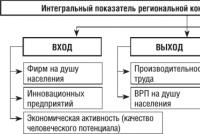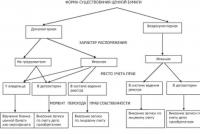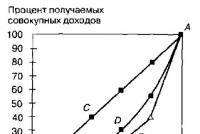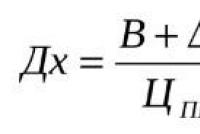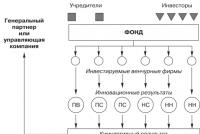Calculation of penalties for taxes - accounting entries: profit, vat, personal income tax. Calculation of penalties for taxes - accounting entries: profit, vat, personal income tax
Interest on taxes and contributions are penalties for late or incomplete (partial) payment of taxes or contributions. We can say that this is a type of forfeit for non-fulfillment of obligations to pay taxes, they are also charged for non-payment of utility bills or alimony, supplies under the contract. But in this article we are interested in tax penalties, their purpose, calculation and payment are regulated in Art. 75 of the Tax Code of the Russian Federation.
Tax payments have strict deadlines. In case of violation of the deadlines, the tax service calculates penalties, which will increase until the tax is paid in full. To stop the growth of penalties, rather pay taxes or fees. Penalty interest is a percentage of the unpaid amount, and is charged for each day the payment is delayed. To calculate them, you need to know the key rate of the Central Bank at the time of the violation.
Who calculates the interest
If the taxpayer or employer fails to transfer the tax or contributions on time, penalties are charged to him. To pay penalties, you will have to wait for the demand from the Federal Tax Service Inspectorate, which itself must establish the fact of non-payment and charge penalties.
If a taxpayer sees a tax arrears and plans to close it, you need to act in the following order:
- calculate the amount of interest yourself;
- pay the amount of arrears and interest;
- send an updated declaration.
In this case, the taxpayer will avoid a fine (see clauses 1 and 4 of article 81 of the Tax Code of the Russian Federation). If you first send an update and only then pay the arrears and penalties, the tax office will impose a fine.
What days are penalties charged
The first day of the accrual of penalties is considered the next day after the end of the term for the payment of tax or contributions. Officials have discrepancies regarding the last day for calculating penalties.
The FTS clarified that penalties cease to be charged the next day after payment, which means that the day of payment is included in the calculation of penalties. However, there is a letter from the Ministry of Finance stating that there is no need to charge interest on the day the arrears are paid. This letter was not sent to the tax authorities for mandatory application, so you can follow these explanations at your own peril and risk.
If the amount of interest per day is small, it is safer to include the day of payment in the calculation of interest. If the amount is large, be prepared for the fact that your actions will have to be defended in court. In addition, a taxpayer can, by a written request, clarify the procedure for calculating with the Ministry of Finance in order to rely on an official response in calculations.
How to calculate interest
The amount of interest depends on the refinancing rate (or the key rate of the Central Bank). The amount is calculated differently for individual entrepreneurs and organizations, and also depends on the number of days of delay. All individual entrepreneurs with any number of days of delay and organizations with a delay of up to 30 days, inclusive, calculate penalties from 1/300 of the refinancing rate:
Amount of arrears * (Key rate of the Central Bank of the Russian Federation for the period of violation / 300) * Number of days of delay
If the organization is overdue for 31 days or more, calculate the interest as follows:
- First, we calculate the penalties for the first 30 days of delay:
The amount of arrears * (Key rate of the Central Bank of the Russian Federation for the period of violation / 300) * 30
- Then we calculate the penalties for the following days of delay:
Amount of arrears * (Key rate of the Central Bank of the Russian Federation for the period of violation / 150) * Number of days of delay from 31 days
- Let's sum up both values.
KBK for transfer of penalties in 2017 and 2018
- Pension insurance - 182 1 02 02 010 06 2110 160
- Health insurance - 182 1 02 02 101 08 2013 160
- Disability and maternity insurance - 182 1 02 02 090 07 2110 160
- Injury insurance - 393 1 02 02 050 07 2100 160
- Income tax to the fed. budget - 182 1 01 01 011 01 1000 110
- Income tax in reg. budget - 182 1 01 01 012 02 1000 110
- VAT - 182 1 03 01000 01 1000 110
- Property tax, except for the UGS - 182 1 06 02 020 02 1000 110
- Property tax included in the UGSS - 182 1 06 02 020 02 1000 110
- Personal income tax (and individual entrepreneur “for oneself”) - 182 1 01 02 020 01 1000 110
- STS “income” - 182 1 05 01 011 01 1000 110
- STS “income-expenses” and minimum tax - 182 1 05 01 021 01 1000 110
- UTII - 182 1 05 02 010 02 1000 110
When you can not pay interest
In some cases, interest is not charged. For example, when a taxpayer's account is blocked or money is seized by a court order. Or when, when calculating taxes or contributions, a businessman was guided by a court order.
Also, you will avoid penalties if the arrears arose due to an error in the payment, which can be corrected by clarifying the payment - in this case, the penalties are canceled. The error is corrected by clarification, if it is not associated with an incorrect indication of the account number, beneficiary bank or BCC.
How to calculate interest with an online calculator
Calculate your interest with our free calculator. Calculations will take less than a minute.
Kontur. Bookkeeping free of charge for 14 days.
28.08.2019
Calculation example
Initial data:
The employee's salary for the second half of the month is paid on the 5th day, personal income tax must be transferred from it on the 6th day.
For February 2018, income tax in the amount of 20,000 was paid only on April 10, 2018, how many penalties should be transferred in connection with arrears?
The delay period is from March 7 to April 9, while until March 25 inclusive, the refinancing rate was 7.5 percent, and from March 26 - 7.25 percent. This means that we will carry out a separate calculation for each rate.
- The upper field of the online calculator: the amount of personal income tax debt = 20,000.
- Middle field: delay time - March 7-25 = 19 days.
- Lower - 7.5% is chosen.
- The top line is 20,000.
- Middle row: late 26 March to 9 April = 15 days.
- Lower - 7.25%.
Calculated results in the calculator:

|

|
Total penalties for late payment of personal income tax = 95 + 72.50 = 167.50 rubles.
Formulas
Since October 1, 2017, the procedure for calculating penalties for tax arrears has changed. The first 30 days, 1/300 of the refinancing rate is in effect, from the 31st day - 1/150 of the rate.
Answer:
When transferring the penalty for late payment of personal income tax in the payment order in the requisite "101", it is necessary to indicate the status "02" - tax agent ".
Rationale:
In accordance with the Rules for specifying information identifying a person or body that made an order to transfer funds in payment of payments to the budget system of the Russian Federation, approved by Order of the Ministry of Finance of Russia dated 12.11.2013 No. 107n, information identifying the payer of funds, the recipient of funds and the payment indicated in orders for the transfer of funds is mandatory, as well as the information specified in the requisite "101" of the order for the transfer of funds, which is filled with an indicator of one of the following statuses:
- "01" - taxpayer (payer of fees) - legal entity;
- "02" - tax agent.
On the basis of clause 1 of article 75 of the Tax Code of the Russian Federation, penalties are recognized as the amount of money established by this article that the taxpayer must pay in the event of payment of the due amounts of taxes or fees at a later date than the time established by the legislation on taxes and fees.
These rules also apply to tax agents (clause 7 of article 75 of the Tax Code of the Russian Federation).
Based on the provisions of paragraph 6 of clause 2 of the Resolution of the Plenum of the Supreme Arbitration Court of the Russian Federation of July 30, 2013 No. 57 "On some issues arising from the application by arbitration courts of part one of the Tax Code of the Russian Federation" it follows that, given the compensatory nature of penalties as a payment aimed at compensation losses of the state treasury as a result of non-payment of tax on time, from a tax agent who did not withhold tax from the taxpayer's monetary funds, penalties may be levied for the period from the moment when the tax should have been withheld and transferred to the budget, until the due date in which the obligation on payment of tax must be fulfilled by the taxpayer independently based on the results of the relevant tax period.
Penalties for late payment of the tax not withheld from the taxpayer may be collected from the tax agent at the expense of his monetary funds and other property (Resolution of the Presidium of the Supreme Arbitration Court of the Russian Federation of May 16, 2006 No. 16058/05, of September 26, 2006 No. 4047/06, of May 22, 2007 No. 16499/06, dated 12.01.2010 No. 12000/09).
According to clause 1 of article 207 of the Tax Code of the Russian Federation, individuals who are tax residents of the Russian Federation, as well as individuals who receive income from sources in the Russian Federation, who are not tax residents of the Russian Federation, are recognized as taxpayers of personal income tax.
An organization that pays income to an individual on the basis of Articles 24, 226 of the Tax Code of the Russian Federation is recognized as a tax agent, which is responsible for calculating, withholding and transferring to the budget the amount of tax.
Based on the foregoing, despite the fact that penalties for late payment of personal income tax are transferred at the expense of the organization, it is not a taxpayer of this tax, but will still act as a tax agent. Therefore, in the payment order in the requisite "101", it is necessary to indicate the status "02" - tax agent ".
Please note, there may have been changes in the legislation. The expert's opinion is based on the provisions of the legislation in force at the date of preparation of the consultation
If you have not found the answer to your question, please contact us for advice. We will be happy to answer your question based on the verified documents included in the Consultant Plus System
Personal income tax is withheld and transferred to the budget by all legal entities that charge any payments to individuals.
It is withheld from any accrued income unless it is fully or partially exempt from taxation in accordance with Art. 217 of the Tax Code of the Russian Federation.
In case of late or incomplete transfer of tax, the company pays a penalty, the amount of which is calculated as a percentage of the delayed payment. It is equal to:
- 1/300 of the refinancing rate established by the Central Bank of the Russian Federation for the first 30 days of delay and 1/150 of the rate for the entire subsequent period. (Clause 4 of Art. 75 of the Tax Code of the Russian Federation).
- 1/300 of the refinancing rate established by the Central Bank of the Russian Federation for the entire period of delay, if the arrears were formed earlier.
The main payment for personal income tax and penalties for the delay in its transfer are paid to different BCC.
To which CSC are penalties transferred if personal income tax withheld from employees' income was transferred out of time?
Individuals, from whose income the company withholds personal income tax, can be:
- ordinary workers who receive remuneration for the performance of their labor duties, and persons working under civil law contracts;
- foreigners employed on the basis of a patent, in accordance with Art. 227.1 of the Tax Code of the Russian Federation.
The tax withheld from their income is paid on different BCC codes:
- employee tax is transferred to the KBK 18210102010011000110;
- flat tax for foreign citizens - at KBK 18210102040011000110.
These codes were approved by order of the Ministry of Finance of the Russian Federation on 08.06.2018 No. 132n. They haven't changed in 2019.
Don't know your rights?
When filling in field 104 of the payment order in categories from the 14th to the 17th KBK of the personal income tax penalty-2019 for employees, the code 2100 is indicated.
KBK for personal income tax penalties will take the form:
- for employees - 18210102010012100110;
- for foreigners working under a patent - 18210102040012100110.
Unlike the tax itself, which is withheld from the income of individuals, late fees are paid at the expense of the employer.
What to do if the KBK code was specified incorrectly?
What if, instead of the KBK code of the personal income tax penalty, the KBK was indicated, according to which the tax itself is paid?
If the detected error did not lead to the non-transfer of the tax to the budget, then the taxpayer must act in accordance with clause 7 of Art. 45 of the Tax Code of the Russian Federation.
In this situation, he has the right to submit to the tax office at the place of payment of tax an application outlining the error and attach to it a copy of an incorrectly executed order confirming the fact of payment. Based on the application received, the tax authority will make a decision to clarify the payment or contact the taxpayer with a proposal to reconcile the settlements.
A sample application can be downloaded.
The IFTS will notify the payer of its decision no later than 5 working days after its adoption. The adjusted payment is deemed to have been paid on the day of its transfer.
***
Penalty collection is an interim measure, the purpose of which is to stimulate the timely transfer of tax. Penalties are transferred to a special BCC code specified in field 104 of the payment order. Incorrectly specified when paying a penalty for personal income tax in 2019, the KBK is not considered a critical error. To correct it, the taxpayer can submit an application to the Federal Tax Service Inspectorate.
How to draw up a payment order for payment of interest on personal income tax in 2020 is detailed in the relevant Order and other regulations. Paying attention to them, you can exclude the possibility of making mistakes.
Dear Readers! The article talks about typical ways of solving legal issues, but each case is individual. If you want to know how solve exactly your problem- contact a consultant:
APPLICATIONS AND CALLS ARE ACCEPTED 24/7 and WITHOUT DAYS.
It's fast and IS FREE!
To be able to transfer funds to the budget, it is extremely important to correctly draw up a payment order correctly, otherwise the required amount will not be credited to the required account.
In particular, if there are errors, the payment will be classified as unclear with all the ensuing consequences.
The rules for generating a payment order are detailed in the Order of the Ministry of Finance No. 107n of November 2013.
Using a specially designed form, you can eliminate the likelihood of numerous misunderstandings.
Basic information
The Russian legislation reflects the time frame during which the payer must obligatorily pay a fee in the prescribed amount.
If the payment periods are ignored, this may result in the accrual of a forfeit in the form of interest. This should be described in detail in the relevant agreement, as well as in the current legislation of the Russian Federation.
The penalty may be:
- fixed;
- or directly depend on the percentage for each day of the existing delay.
The legislation of the Russian Federation does not provide for the possibility of reaching the necessary agreements orally. In particular, we are talking about the formation of a written contract.
During the period of calculating penalties, regardless of whether the FIU is in question or the FSS or the UFNS, the following must be taken into account without fail:
- the size ;
- settlement terms;
- sum.
The amount for which the penalty is calculated should only be taken into account that was not previously paid for any reason.
It is customary to refer to the main features of penalties:
- use for delay of the assigned obligations;
- daily charges;
- percentage.
The penalty is calculated as follows:
- Initially, the amount of debt obligations is established.
- Next, you should find out the delay period.
- After that, the rate of forfeit is determined.
- Next, the calculation of the penalty for the day takes place. In this case, the amount of debt obligations must be multiplied by the rate.
- The total amount of the penalty is established.
In addition, do not forget about the features of the penalty, which are as follows:
- the amount must be known for each party;
- the forfeit is subject to accrual due to the identified violation, while the presence of a loss is optional;
- there is no need to confirm the amount of the penalty.
A corresponding notification about the need to pay a penalty fee is sent by representatives of the tax authority or the fund.
There is no need to make the payment on your own, since in this case there is a high probability of making mistakes.
Definitions
A payment order means a document, thanks to which the owner has the right to issue a personal order to transfer funds to another account in the established amount.
Thanks to this, it is possible to make a calculation:
- for any goods or;
- transfer the advance;
- pay off debt on;
- pay interest and make numerous government payments and contributions.
In other words, through a transfer order, the bank is allowed the opportunity to ensure any legal movement of funds.
This year, the banking service system is fully automated, which is why there is no need to personally contact a banking institution - you can draw up a document in electronic form.
Moreover, it is impossible to say that it is possible to make several payments on the basis of one drawn up order.
It is worth paying attention to the fact that the period of execution of the order is:
Based on many years of practice, funds are transferred within 24 hours.
The legislative framework
The types of penalties are detailed in. The rules for filling out a payment order for such types of penalties are set out in.
What you need to know
The payment order for the payment of the penalty interest does not entail any difficulty. At the same time, it is extremely important to follow the established rules in order to exclude the possibility of making mistakes.
For this reason, it is advisable to consider this issue in more detail.
How to correctly form
The rules for filling out the considered payment are as follows:
| Field | Explanations for the indication of data |
| 104 | Budget classification code displayed |
| 105 | OKTMO data should be entered. In the case of a municipality, the code value includes 8 characters. In the case of the indication of the settlement - 11 characters |
| 110 | No filling required |
| 101 | Status 08 is displayed regardless of the type of tax |
| 21 | It is necessary to put down the value “5”. If a different value is specified, the bank will not be able to make the payment |
| 24 | Referred to as “purpose of payment”. It is necessary to indicate additional information in order to transfer funds |
Particular attention should be paid to filling in the fields, since in case of entering inaccurate information, the payment will be considered as irrelevant.
It differs from a standard payment document in this way:
| The field “Type of payment” is not required | The fact that the money is paid for a penalty will become known directly from the KBK |
| The basis for payment also varies | In case of voluntary payment, please indicate "ZD" |
| Depending on the reason, the payment will have a different tax period | Voluntary repayment - 0, as there is no periodicity. If a penalty is paid on demand (basis - TR), then a specific period is indicated - a quarter, month or year |
| If the penalty is paid in person | Then in field 108 "document number" 0 is put down. |
Knowing about the available nuances, you can exclude the possibility of entering erroneous data. Only after checking the specified details, the payment can be transferred to the bank.
Sample payment order for payment of interest on personal income tax in 2020
If salaries are paid to employees, then the employer, represented by the company, acts as a tax agent.
It is he who is entrusted with the responsibility for correct and timely calculation, including withholding tax from individuals for the possibility of transferring to the budget.
You can withhold tax at the expense of any amount that is charged to the taxpayer or through third parties.
At the place of direct registration, tax is payable to the treasury. But there are situations in which it is not possible to keep.
Video: filling out a payment order for payment of penalties
But what to do in this situation? The taxpayer must inform the tax authority about this.
This must be done before the end of the tax reporting period. Upon notification, the obligation to withhold tax is suspended.
If notified within the specified period, then the default interest cannot be charged. If the period ends and the tax authority is not notified, then the penalty is subject to compulsory accrual.
During the formation of a payment document, as noted earlier, it is extremely important to indicate such important details as:
- the code ;
- status;
- priority;
- the basis for the operation;
- taxable period;
- form number;
- date of compilation;
- type of payment.
The payment document must be generated in 4 copies, which must be transferred to the taxpayer's financial institution.
It is necessary to pay attention to the fact that in case of voluntary payment of the calculated tax, it is recommended to immediately pay the penalty interest.
At a minimum, this makes it possible to eliminate the likelihood of multiple tax consequences.
What are the deadlines for passing
In what period the penalty must be paid is not specified in the norms of Russian legislation. This is largely due to the fact that such payment is already associated with delay.
In particular, payment must be made:

